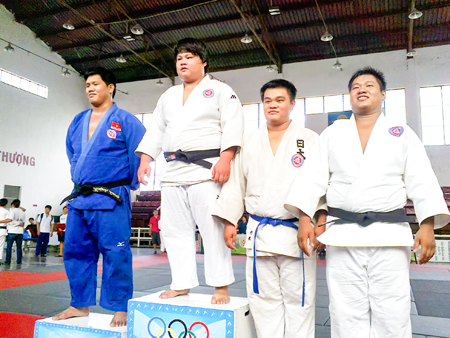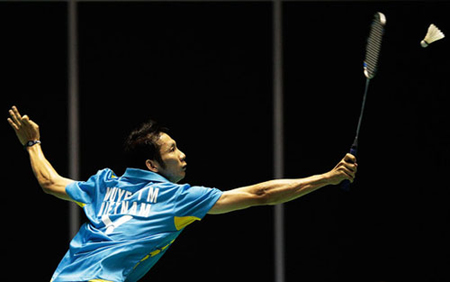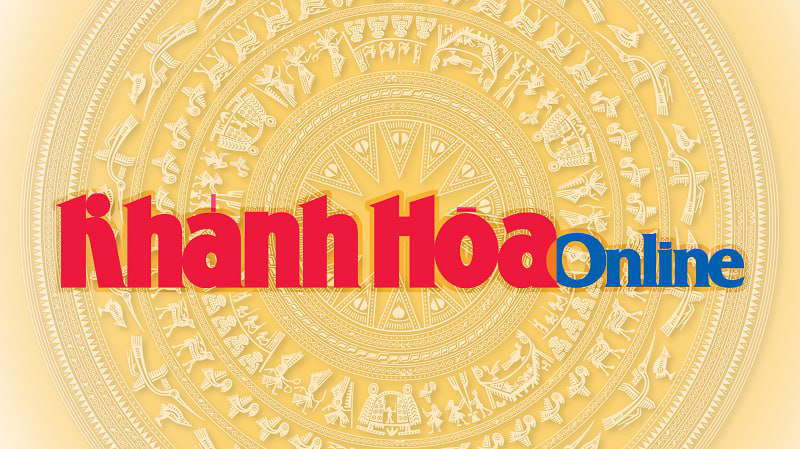
At the Fifth Asia Beach Games held in Da Nang, Vietnam in September, 2016, Khanh Hoa has many athletes of beach sports selected to join the national sports teams, among them are jujitsu athletes.
At the Fifth Asia Beach Games held in Da Nang, Vietnam in September, 2016, Khanh Hoa has many athletes of beach sports selected to join the national sports teams, among them are jujitsu athletes.
Jujitsu, traditional Japanese martial art, is a quintessence of oriental martial arts. Its origin has still not been clearly identified; however, is has been known as a powerful fighting skill of Samurai during the medieval times in Japan. Jujitsu comprises many techniques such as striking, throwing, restraining (pinning and strangling), joint locks, weaponry, and grappling in which pressure-point attack and grappling have been considered as two of the most effective ones. “A jujitsu master can paralysis or knock the opponent out, or even kill the rival only with a pressure-point attack,” said Nguyen Long Phu, Khanh Hoa Province’s Judo Section chief.
 |
| Khanh Hoa's judo athlete, Vo Minh Tri (second from left), selected to join national jujitsu team. |
Its dangerous techniques may be the reason that jujitsu has not been spread widely. However, some masters of martial arts modified jujitsu, eliminated some of the jujutsu techniques that they deemed dangerous, and created two martial arts styles which are aikido and judo.
In the Olympic system, jujitsu has been incorporated in some tournaments. For example, Jujitsu was contested as a demonstration sport at the Asian Indoor Games 2009; became a part of Asian Beach Games 2014. Additionally, this martial art will be included in the World Beach Games 2017 and ASIAD 2018.
Up till now, Vietnam has still not formed jujitsu federation and not organized any jujitsu tournaments. However, Vietnamese martial arts athletes have took part in jujitsu event at some international tournaments, and gained quite many medals. Reportedly, most of jujitsu athletes of Vietnam are also judo athletes. Khanh Hoa’s sports has contributed to the development of jujitsu in Vietnam since the first days this martial art was introduced into Vietnam. Nguyen Long Phu, Khanh Hoa Province’s Judo Section chief, joined the first jujitsu training course held in Hanoi by the Olympic Council of Asia and then worked as a referee at Asian Indoor Games.
Since then, jujitsu has silently developed in Khanh Hoa, attracting not only Vietnamese but also foreign practitioners of other martial arts like muay Thai, karate, boxing, kickboxing, Brazil jujitsu, and so on. At the National Judo Club Championship 2016 in Vung Tau, Ukrainian athlete Filonenko Oleksii, member of Khanh Hoa team, who, at that time, has practiced jujitsu at Khanh Hoa Judo Center for less than two months, won over the opponent within 15 seconds with a typical technique of jujitsu, armbar.
Khanh Hoa Province has also offered jujitsu training courses to the most excellent judo heavyweight athletes and sent them to compete in jujitsu competitions. Khanh Hoa’s athlete Vo Minh Tri (champion at the national judo tournament for young athletes from 2009 to 2014, winner the National Judo Club Championship 2013, bronze medalist at the international judo tournaments held in Japan and Thailand) has been practicing as a member of the national jujitsu team to prepare for the Regional Ju-Jitsu Championship East Asia (held in Hanoi in June) and South East Asia and fifth Asian Beach Games (Danang).
In order to promote the development of jujitsu in Khanh Hoa, Khanh Hoa’s judo section has recently opened jujitsu training classes at Nha Trang Judo Center.
H.D
Translated by H.N










